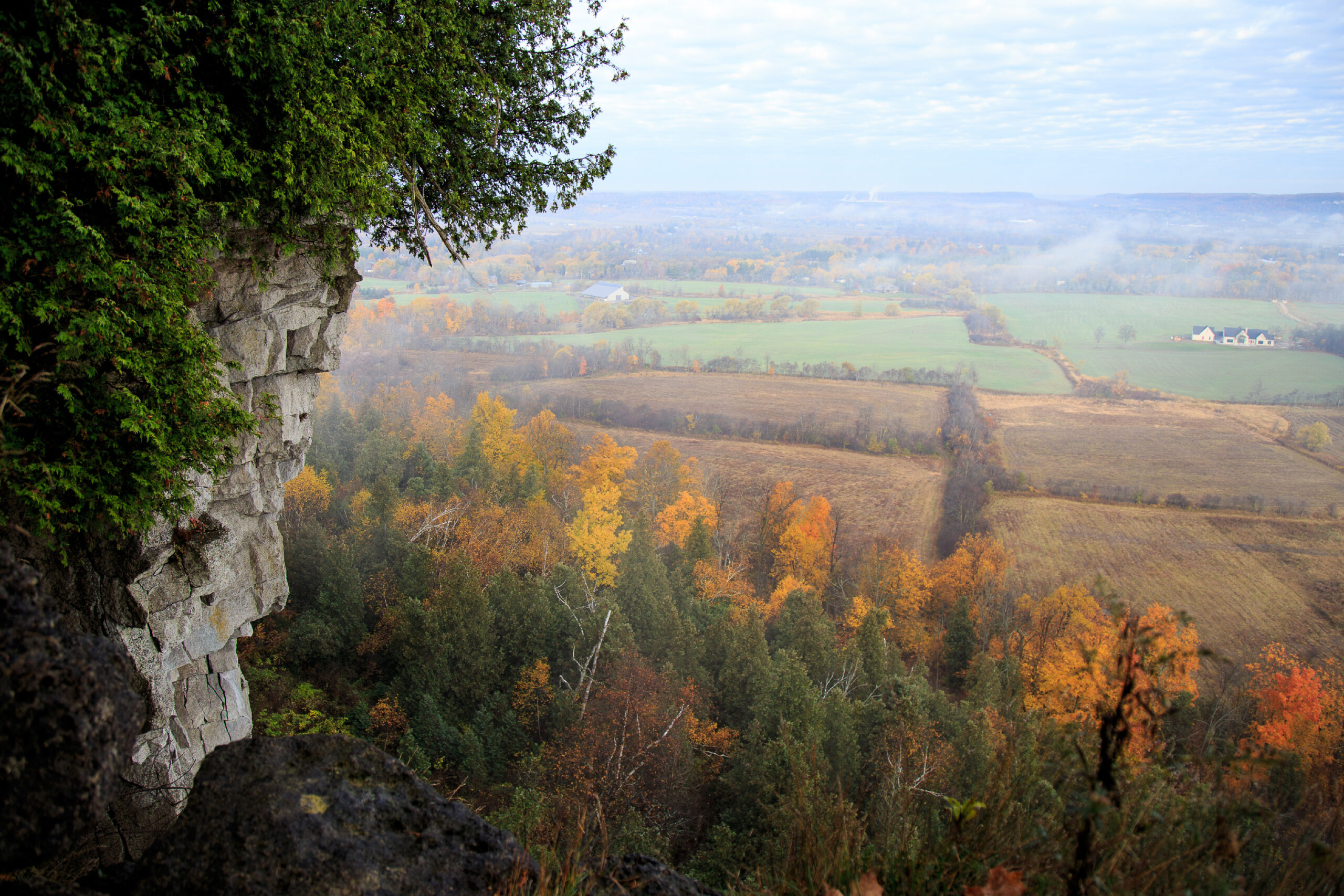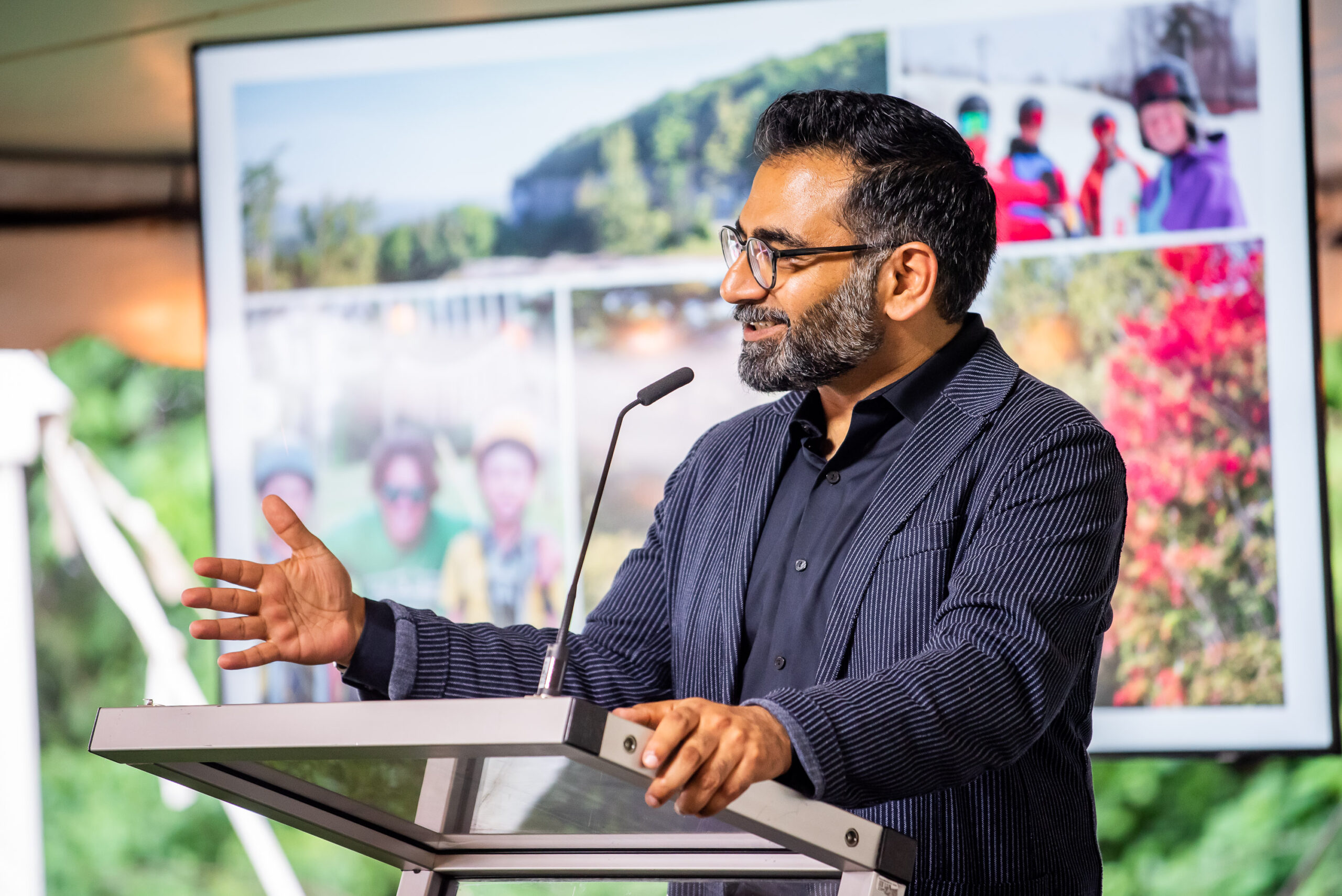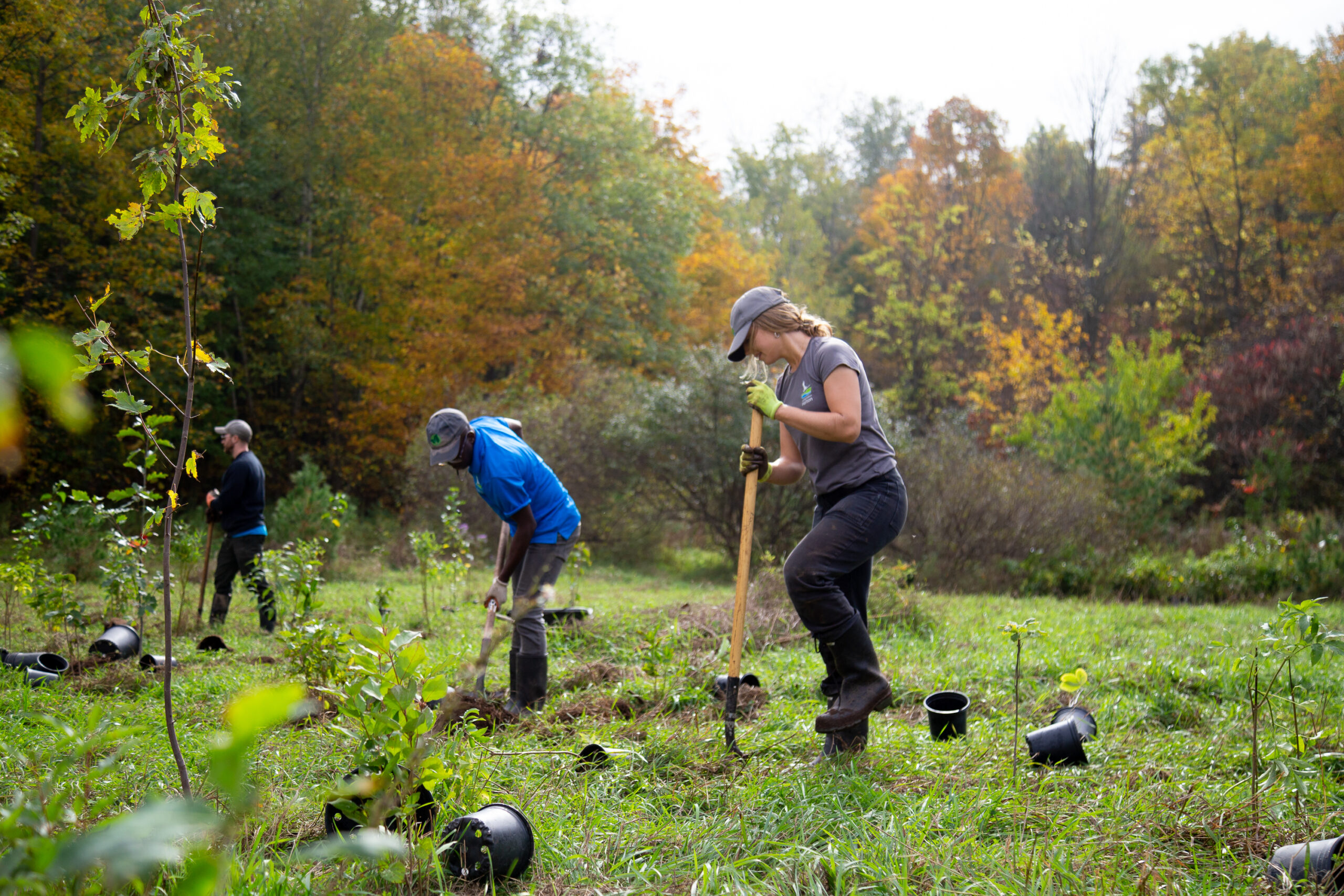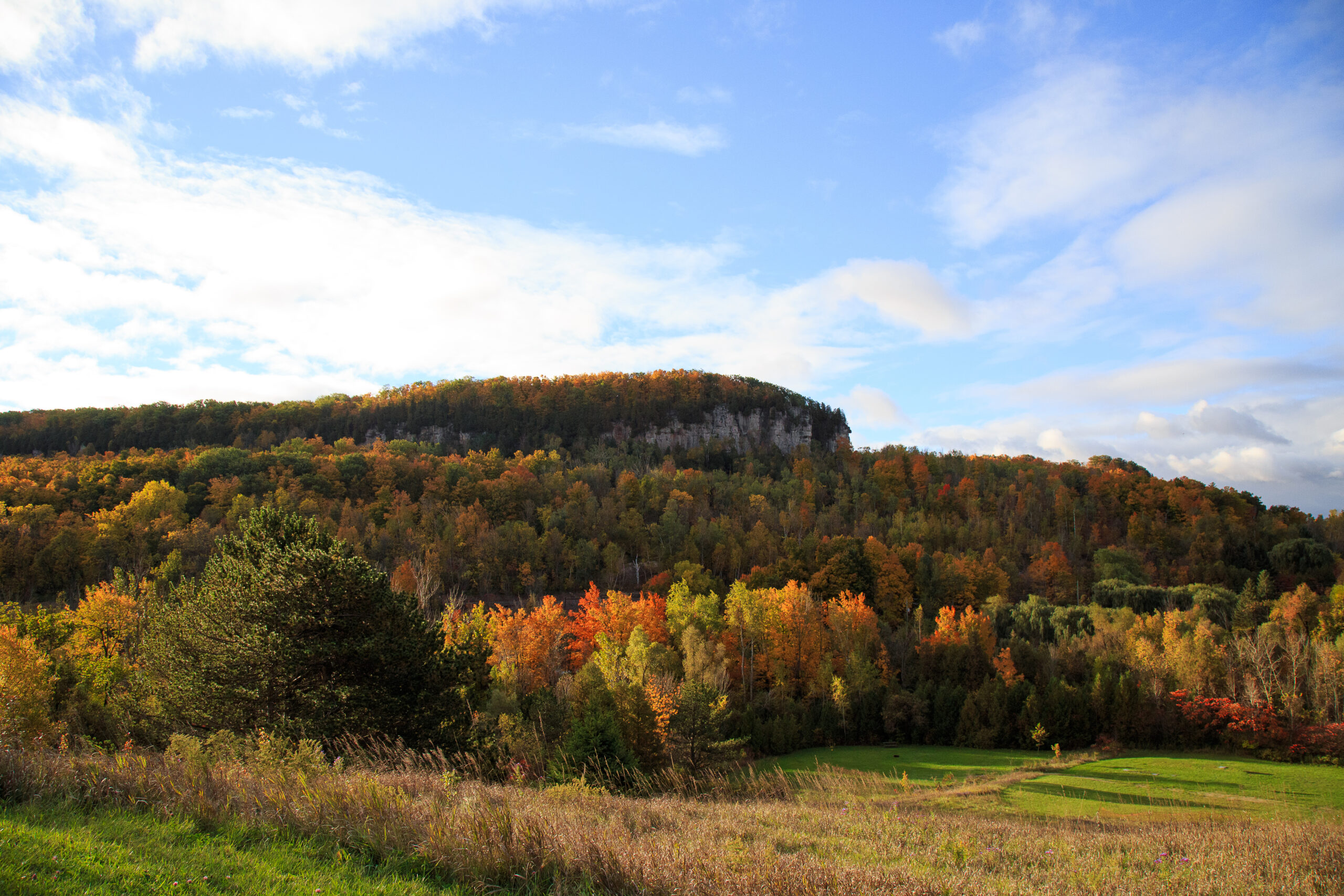
Celebrating 7 years of The Narwhal — and gearing up for the next 7
Between a fresh take on engagement and our new life on video, our team is...
Hassaan Basit began working for conservation authorities in 2004. By that time, the unique Ontario entities already had a storied history mitigating the impacts of climate change, ever since they were established in 1946 in response to severe flooding across the province.
“It was this great moment,” Basit said. “You’re looking at the post-World War Two boom when there are opportunities across North America, and here’s Ontario that can’t deal with a flooding issue. It’s getting in the way of sustained growth they knew was coming.”
Back then, it was “a big deal” for the province — led by a Progressive Conservative government — and all its municipalities to come together and create a solution, especially one that wasn’t based on human-made geographical boundaries, but on natural boundaries: watersheds. Basit calls the authorities “one of Ontario’s best grassroots-led innovations,” which are widely credited with helping to reduce the impacts of floods and other natural hazards.
Fast forward 80 years and Ontario is again grappling with intense growth, balancing the building of much-needed housing with minimizing flood risk and protecting land and wildlife.
Basit is the outgoing CEO of Conservation Halton, which protects sprawling, natural spaces that knit together the rapidly growing communities of Burlington, Milton, Oakville and Halton Hills. He spent two decades with the organization, moving up the ranks to take the top role in 2017.
Since then, he has become a pivotal figure in the standoff between conservation authorities and the current Progressive Conservative government, which has played out for the last five years. After the first round of cuts, he marched into then-environment minister Jeff Yurek’s office to demand an explanation, and ended up leading a working group made up of the authorities, municipalities, developers and the province that tried to chart a less combative and more collaborative way forward.
As Ontario kept reducing the authorities’ powers — transferring oversight of their work from the Environment Ministry to Natural Resources — tensions continued, and Basit kept fighting, both on the frontlines and in back rooms. Along the way, he has engaged directly with Premier Doug Ford, even while the minister of natural resources continued to deliver blows.

The latest round of changes take effect April 1, when Natural Resources Minister Graydon Smith will gain the power to overrule conservation authority decisions and any conditions they place on building permits. Developers will be able to ask the minister to review permit denials and challenge the studies used to justify them. It will be easier to build docks and other small structures, even in places prone to floods, and the distance between development and sensitive shorelines and wetlands will be reduced.
As Basit takes on a new role as city manager for Burlington, he sat down with The Narwhal to reflect on the relationship between conservation authorities and the province, and why Ontario needs the authorities to truly make it a place to grow.
This interview has been edited for length and clarity.
Conservation authorities have some of the brightest minds working within them: people who understand flooding, water, weather patterns, drainage systems and hydrology … We were created as an environmental solution that is closely linked to economic and social gains or losses. The provincial government of the day gave us a toolkit, realizing that many things needed to be part of this solution, not just a hammer and a set of nails.
You don’t let people build in floodplains where they’re going to lose their life and their property — that’s a no-brainer. We had all these tools to make sure we didn’t put concrete everywhere. Back then, in the 1960s and 1970s, there were tangible solutions that people could see: dams were being built, forests were being replanted, water quality and creeks were visibly becoming better. And we were growing economically.
But when man-made impacts started accelerating, the job became tougher. Everybody started talking about climate change [in the 1990s] and it immediately got politicized. Guess who’s in the middle of it all?
We were given a lot more to do, which we were capable of. But then [former Ontario Progressive Conservative premier] Mike Harris decided to cut our funding overnight by 80 per cent or something like that. What the province got wrong over subsequent decades, and continues to get wrong occasionally, is that you can’t just increase responsibilities, reduce funding and then walk away.
They cut the funding and abandoned the conservation authority child at the door of municipalities. They rang the door and ran off into the night. What do I mean by that? They stopped modernizing our policies to address the changing environmental and social landscape. And that’s when things started to fall apart. … So what we’ve ended up with today are archaic policies from the province.
Anything innovative needs to be nurtured along the way for it to continue to be leading edge. Otherwise, it’ll fall apart.
The reason conservation authorities are in the crosshairs is because we haven’t had that open discourse with the province where we’ve said, ‘Here’s what we need to modernize and to stay in lockstep with today’s economic priorities.’ We haven’t been able to do that because the province doesn’t treat us like an actual partner.
They buy into the narrative they hear that we are working against Ontario’s ability to grow and develop … but this is from people who don’t always understand how a conservation authority works. Let me boil it down: conservation authorities exist to enable growth and development. That’s it. … There is no [conservation authority] that is anti-development.
The very reason we were created was so that the province can continue to grow and prosper, economically and socially, but in a way that doesn’t take away the right of future generations to do the same. In other words, sustainably. So you don’t grow and build something where you’re going to suffer losses due to flooding and erosion. That’s terrible. Nobody wants that.
And we’re recognizing the value of the Ontario model today. Desjardins just announced it is pulling out of insuring homes in the floodplain [in Quebec]. The [Federal Emergency Management Agency] in the United States is now going to pay people money to take their homes out of the floodplain … rather than keep bailing them out financially after every disaster. We don’t have to do that in Ontario because of [conservation authorities].

Both things are true: conservation authorities are being forced to work beyond our legislative scope of responsibilities because climate change demands us to protect communities, but also because our provincial regulations haven’t been progressively updated to what they need to be today. It’s not 1965 anymore. Everyone is declaring climate emergencies. And when we tell them how to solve it, nobody wants to do that.
That’s why, to the outside world, it may seem like we’re going beyond our scope … We’re desperate for modernization and looking for tools to be able to do the job better, but we don’t get the support where we need it, so we might occasionally contribute to the inconsistency of slower approvals. … There’s a grain of truth to all the criticism, but it’s not because we want to slow things down. It’s because we are trying to make sure we are getting it right without a playbook for how to deal with issues of today.
When I started the job we were issuing a permit within 30 days about 65 per cent of the time, which isn’t a great performance. Now we issue permits in 30 days, 98 per cent of the time. That took eight years.
What Conservation Halton does and what a lot of other [conservation authorities] are doing today is sitting down with developers and saying, ‘Okay, what you are proposing to build may not get you an approval. However, let’s see how we get there … Let’s see if we can get this to a yes.’
You know, [conservation authorities] are willing to make sacrifices. They’re willing to make changes. But they need a partner.
This government, when they truly engaged with conservation authorities, they’ve been really fantastic partners. We’ve been able to put multiple stakeholders around the table and actually solve environmental-related regulatory issues. Then things changed. People come in and out and the relationship changes and we get back into this zone … of 4:30 p.m., Friday-before-a-long-week-end changes.
It’s been a mixed bag. Politically, it’s been some of the most transformative engagements in the last decade and also some of the most frustrating.
Yes and no. The Ford government has harmonized regulations … and that will help. If it helps with nothing else, it’ll help with that narrative from people who have seen one [conservation authority] allow something and another doesn’t. Now, there are underlying scientific reasons for that: even if we build absolutely homogenous cities, the landscape is different everywhere we build. Just because the houses look the same doesn’t mean the environments are the same. So there are good reasons, but there have been inconsistencies. And one regulation might help.
And then there are some pieces like the minister’s authority to override permits. It’s been on the books for a long time and we question the need for it. Why not address the root causes rather than give yourself that judge-jury power? That’s troubling.

You need to go back to what kind of permits [conservation authorities] issue: the goal is to prevent loss of life and property. That can never be forgotten … this isn’t about building height. It isn’t about aesthetics. It isn’t about the number of parking spaces. It isn’t about changing the character of a neighborhood. It is about, ‘If you build here, you increase the potential of somebody living in that new space that you’ve approved … potentially losing their lives or exacerbating the risk of floods and other hazards.’
What the government needs to understand is conservation authorities are not yet another regulator. We are the first regulator. If a space is not safe to build, nothing else really matters.
We’re not a stakeholder, as far as I’m concerned, of the province. We’re not someone you give a heads up to or put on a checklist of calls. No, you need to start with us. Bring us into that conversation. We’re an extension of the province. We need to be at the table with you because we are in the field along with municipalities.
When this government brought in the working group, which was very much a roundtable, we achieved some major modernization successes … Did everyone agree with everything? No. But with proper dialogue, with agreement on the problem we were trying to solve, everybody understood why we decided what we decided.
There isn’t one solution. The province should stop walking around with a hammer and a bunch of nails in their pockets.

Yes, I think the premier understands the value of conservation authorities. He understands universal concepts that are important to Ontarians: clean water, clean air and safe communities from natural hazards. And he doesn’t want to compromise on that.
I think of the premier as an innovator and I think innovators can get it wrong every now and then. But I think it’s at the ministry level that so many things are impacted. The minister has a lot of power … I’ve seen the pendulum swing with only that one person changing over the last few years: that’s the minister [of natural resources]. The premier always says the buck stops with him, but in many cases it’s with the minister or the people that are advising them. So much depends on their persona and how sincerely they want to engage.
Every time the province has tried to take a shortcut, like slashing the power of conservation authorities, and saying somebody else now has to do it, that somebody else has been a municipality. That has led to and will continue to lead to slower processes and increased costs for developers and taxpayers. If you think that 36 [conservation authorities] doing something in the entire province is a recipe for inconsistency, I don’t see how over 444 municipalities doing that thing make things better. It doesn’t.
It’s been a team effort. Other conservation authorities have done the work too. We rely on each other. We know what our own problems are, and we’re acknowledging and facing them together … Conservation authorities are 100 times more important today. If there’s a problem, we’ll bring you 10 solutions.
But we need meaningful engagement for that. We needed the working group after the second election to keep the momentum; that never happened. Instead we got Bill 23. That’s what I fear: which door will the province keep open? One of unilateralism, where they understand so little of the very technical aspects of our work or the boots-on-the-ground experience we have, and make arbitrary decisions? Or are they going to work together?
Sometimes I think the province feels that in order for them to go fast they must just make the decisions. Every time they’ve done that on the environmental file, its not worked out.
You cannot put a chain link fence around the environment and assume that if people stay out it’ll be fine. That’s not what conservation authorities do. Our job is to say ‘Here’s the environment. Come build in it and live in it. Come play and farm on it and use it to its maximum potential without crossing the line where that land is no longer available to us and to future generations.’
That’s a very tough job. We’re not in the business of saying no. We’re in the business of saying yes, but learning from that and adjusting things. That’s why we’re always in the firing line. We ask a lot of questions to help figure out how close we can get to the line. And we could do it better if everyone, including conservation authorities and the province, show humility and engage as partners.
Get the inside scoop on The Narwhal’s environment and climate reporting by signing up for our free newsletter. On a warm September evening nearly 15...
Continue reading
Between a fresh take on engagement and our new life on video, our team is...

The public has a few days left to comment on Doug Ford’s omnibus development bill....

115 billion litres, 70 years to fix, $5.5 billion in lawsuits
